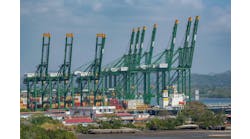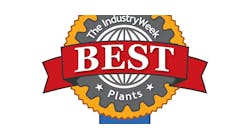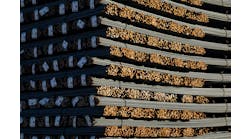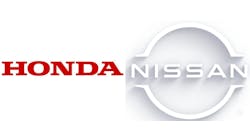The auto industry "is on an upswing," declared Kristen Dziczek, director of the labor and industry group for the Center for Automotive Research (CAR), earlier this month at CAR's "Driving Change" conference in Dearborn, Mich.
"The Detroit Three automakers are posting positive cash flow for the first time in five years," Dziczek said during the event's opening session on May 4.
When Dziczek noted that even Chrysler had reported a profit (which the automaker announced just two days earlier), the several hundred auto executives, engineers, educators and workforce development officials in the audience burst into applause.
A Booz & Company survey of more than 200 executives from U.S.-based automotive OEMs and suppliers, conducted in January and February, offers a more sober view of the state of the U.S. auto industry.
Nearly two-thirds of the executives surveyed asserted that the restructuring efforts undertaken by OEMs and suppliers during the recession did not go far enough to address the industry's vulnerabilities. And the vast majority of the executives said the current state of the U.S. auto industry is about the same as -- or only somewhat better than -- it was in January 2009.
Perhaps most alarmingly, nearly 30% of the executives said they expect an automotive OEM to fail within the next two years.
Adjusting to a New Normal
Taking into consideration the "horrendous restructuring" that took place in 2008 and 2009 -- one that saw GM and Chrysler, as well as a number of suppliers, go through bankruptcy -- Booz & Company Vice President Scott Corwin isn't surprised by the survey results.
"I think the survey results reflect a certain realism, if you will, about the challenges that exist," Corwin tells IndustryWeek.
The sober realism expressed in the survey shows that U.S. auto industry executives have come to grips with what "life is going to be like going forward" -- especially in the crowded U.S. market.
"I think it's going to be a fight every single day for these manufacturers. No one can rest on their laurels."
Based on the survey feedback, Booz & Company offers a number of recommendations for the U.S. auto industry. Managing costs is a common underlying theme.
Of course, the U.S. automakers need to crank out eye-catching vehicle designs that compel American car buyers to "fall in love" with Detroit again, Booz & Company says. But at the same time, they need to "create portfolios and development systems that produce a positive return on investment for all vehicles" -- not just trucks and SUVs -- while continuing to lower their material and structural costs.
Suppliers, meanwhile, need to focus on the markets where they are best-positioned to create a sustained competitive advantage, while continuing "to aggressively manage costs," the management consulting firm says.
Corwin admits that the firm's advice "sounds straightforward." "But boy, it's pretty hard to pull off," Corwin says. "It's challenging. If it were easy, they'd all do it. So I have a lot of empathy for the management of the manufacturers as well as the Tier 1s. It's a tough job."
Can WCM Save Chrysler?
Managing costs through waste elimination is at the heart of the World-Class Manufacturing (WCM) operating system, which is being implemented at Chrysler's plants around the world.
Chrysler CEO Sergio Marchionne leveraged WCM principles to resurrect Fiat -- the Turin, Italy-based automaker was hemorrhaging cash when he was named Fiat's CEO in 2004 -- and steer the company to profitability. Not surprisingly, when Marchionne became CEO of the new Chrysler in June 2009, he quickly ordered the troubled automaker to adopt the system.
Chrysler's execution of the WCM system likely will play a pivotal role in determining its fate.
"It's a significant part of our business right now to stay competitive and stay ahead of the curve," says Fred Goedtel, vice president and head of assembly operations for Chrysler. " It's a very significant part of our business -- it has to be."
Photo: Chrysler Group LLC
The system emphasizes applying the seven steps to a "model area" within a plant and then expanding the process to other areas of the plant, Goedtel explains.
"So we build our own competence and develop our own experts, and then we expand it," Goedtel says. "And the key is to maybe expand every three or four months into other areas and start eliminating losses or waste or accidents or defects by going back to the areas where we just implemented [WCM] and using them as an example to show people that yeah, no kidding, we can get there."
Gerald Greer, WCM environmental pillar lead for Chrysler's Global Engine Manufacturing Alliance (GEMA) plant in Dundee, Mich., compares previous continuous-improvement methods to "looking through a magnifying glass at a problem."
With WCM, Greer says, "it's like looking at the same problem through an electron microscope."
"In the past, we may have looked at energy consumption, but it may have been looked at monthly, and it would have been looked at from a very holistic perspective," Greer says. "As we've gone on the WCM journey, now it's about looking at electricity usage down to the area, then down to the zone, then down to the machine, then down to the type of motor, then down to the type of pump."
By applying WCM principles, the GEMA plant's World Gas Engine line has reduced its energy costs from around $9.41 per engine in 2008 to $8.20 per engine so far this year.
At Chrysler's Belvidere, Ill., Assembly Plant, the application of the WCM process last year inspired the creation of what Chrysler calls the "happy seat." The seat, which has an arm attached to overhead rails, enables operators to slide into car-door openings to more easily install fasteners for side airbags. In the previous work practice, operators had to reach inside the vehicle and blindly install the fasteners -- leading to repetitive-motion injuries because of the awkward angle of installation.
Other changes in work practices stemming from the WCM protocol include the creation of a sparkless welding process at Chrysler's Toledo (Ohio) North Assembly Plant, and use of line-side "limos" that delivers tools and parts to operators -- cutting down on non-value-added walking.
"The customer doesn't pay for us to walk to get a part," Goedtel says. "So, for example, in [the] workplace organization [pillar], we try to move the parts as close as we can to the operator in what we call the "golden zone," where the parts are presented within 60 degrees of their reach, so he or she doesn't have to walk 10 steps to get the part and then walk back to the car."
Goedtel is confident that the WCM operating principles are affecting the company's bottom line. That seems clear, given that Chrysler earlier this month reported a first-quarter net income of $116 million on net revenue of $13.1 billion -- its first quarterly net income since emerging from bankruptcy in June 2009.
"I've been in manufacturing for 30 years, and I've learned just as much about how we can make the elements of our business more efficient in the last year and a half or so as I've learned in the last 25, 26 years," Goedtel says. " I can tell you from my experience and my years in manufacturing that this stuff is directionally the right thing to do to make the business better. It absolutely is."
Gearing Up for the Next Downturn
Ulf Buergel, president and CEO of bedliner manufacturer Penda Corp., hews to a philosophy that he believes will keep his company at its fighting weight for the next downturn: Keep your sights set on what's in front of you, not what's behind you.
"I compare running a company with driving a car," Buergel says. "And what a lot of companies do is they constantly look at a rearview mirror -- which is historical financial results and what they've done in the past -- and hope that they can run the company going forward. Well, if I drive a car on the interstate and I'm constantly looking in the mirror, I'm going to miss something in front of me."
That philosophy may very well have saved the Portage, Wis.-based Tier 1 automotive supplier from extinction as well. Sensing that the economy was about to take a turn for the worse in 2008, Buergel restructured Penda, cutting costs by around $2 million through job cuts, unpaid companywide furloughs and other measures.
"I compare running a company with driving a car. And what a lot of companies do is they constantly look at the rearview mirror."
After the aforementioned auto-industry survey was released in April, Booz & Company Principal Brian Collie noted that automotive suppliers "need to think carefully about their own distinctive capabilities: what they can do better than anybody else to create a unique place in the competitive landscape of the industry."
The quote very well could have been inspired by Penda's principal strategy. The company has carved a niche by focusing on its core competency: heavy-gauge thermoforming of large plastic parts.
"That's what we focus on because A, we have the right equipment to make those kinds of parts; B, we have the right technology; and C, we believe it provides a significant competitive advantage because we are eliminating Far Eastern suppliers by producing parts that would be extremely expensive to ship over a longer distance," Buergel says.
Penda, which once upon a time made nothing but bedliners, in recent years has been exploring new applications and markets for its thermoformed products -- within and outside the auto industry. Buergel points to molded-in color tonneaus for pickup trucks; hoods for lawnmowers and tractors; and its SmartDitch plastic liners for stormwater-management applications, as a few of the examples.
Unfortunately, new-product offerings had minimal impact on Penda's top line during the recession, Buergel notes. But looking ahead, he sees them helping to stabilize the company during the next downturn -- "which we all know is going to come."
"Even though people might not want to believe it," Buergel says, "it will come."
See Also:




